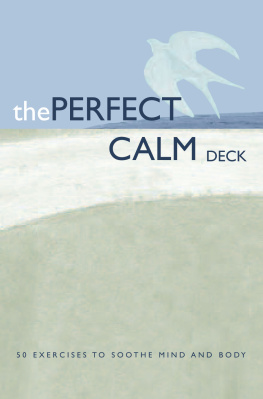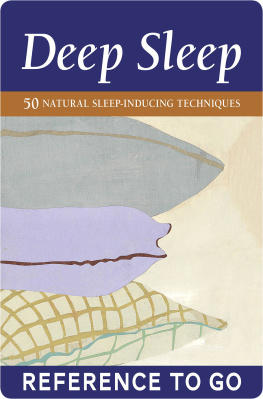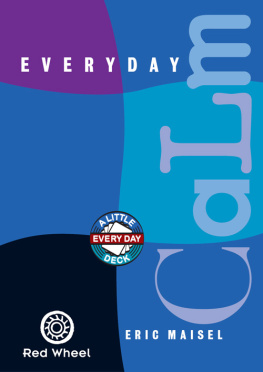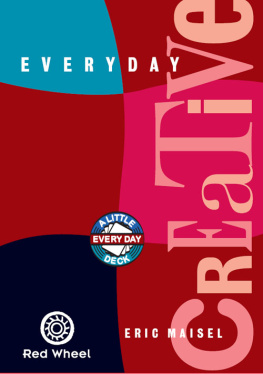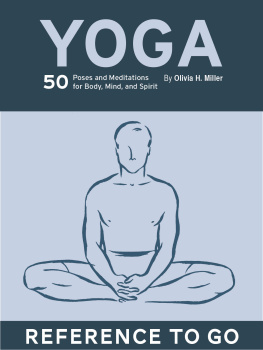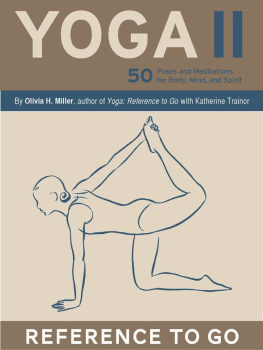essential meditations

essential meditations
50 exercises to focus the mind
INTRODUCTION
Meditationdeep, quiet reflectionhas been practiced for centuries to find balance in life. In todays stressful world, it can serve as an essential tool for establishing a sense of inner peace. But many people are intimidated by the idea of meditation. Theres no need; it actually can be quite a simple practice that can be incorporated into your life in a variety of ways. If youre new to meditation, Essential Meditations offers an easy, enjoyable introduction.
What is Essential Meditations?
Each of the fifty exercises in Essential Meditations includes an inspirational image and a guided meditation. Most of the images have been selected to create visualization triggers or a point of focus on which to meditate. Try out all the exercises in your own time. While some exercises will speak to you more than others, also try those meditations that dont immediately appealsometimes these reveal the most about our inner nature.
Basic considerations: When and for how long?
Any time of the day is acceptable for your meditation practice, although you may feel that you are most alert first thing in the morning and most calm at night. Begin with short sessions. Five to ten minutes at a time is sufficient at first. As with physical exercise, it is better to practice meditation briefly and often than to undertake long, infrequent sessions. Once you are into a routine, try to stick to itthe mind becomes conditioned to focus more quickly once it recognizes a regular pattern.
Preparing for your meditation session
Dont expect to be able to jump straight into meditation from your daily activities. Unless you are meditating first thing in the morning, allow your mind at least fifteen minutes to unwind from the stress of the day. Try to establish a pre-meditation ritual to help set the right mood. Wash your face and hands (a symbolic banishing of the days stress) and change into some loose, comfortable clothing that will not restrict your breathing. Your aim should be to feel alert, yet relaxedtaking a few deep breaths before you start will help you. If you choose to meditate at night, you might wish to light a candle and begin with a few words of thanks for the passing of another successful day.
Finding space for meditation
Meditation is best practiced somewhere quiet and free from distractions. Turn off your phone and ask other members of your household to allow you some quiet time. Choose an area in your home to be used only for meditation. This does not have to be a dedicated rooma corner in your bedroom or study will do. You could set up an altar displaying a selection of inspirational objects (perhaps a candle, a bell, or an image of a spiritual teacher) to aid your practice. Sit directly in front of this altar so that it becomes a point of focus.
Finding the right posture
The most important considerations for meditation posture are that you keep your back straight and are able to maintain the position for the duration of your practice without discomfort. Unless other guidance is given in the exercise, the following are good postures to adopt for meditation.
Easy cross-legged posture:
The easiest way to maintain a straight spine while sitting on the floor is by sitting cross-legged. Place a couple of cushions under your bottom to raise your hips slightly, if this is more comfortable. Lengthen the spine by pushing your palms down on the floor and stretching your back in an upward motion. Then, gently rest your palms in your lap.
Seated posture:
If you find it difficult to sit on the floor, you can sit toward the front of a hard, straight-backed chair. Place your feet flat on the floor with your toes pointing forward and your heels directly below your kneesplace a block or a book under your feet if they dont quite reach the floor. Lift your chest and imagine that a thread is pulling you straight from the top of your head, to help straighten your spine.
How to use the guide
Choose an exercise. First read through the text, then spend a few moments looking at the image to prepare yourself mentally for the exercise. Try to focus on the image fully, emptying your mind of distracting thoughts. Dont forget to breathe, slow and steady. When you feel calm and ready, return to the text.
A final word
Dont expect every meditation session to be exactly the same. At first, meditation consists largely of discovering and then trying to control your unruly mind! Dont be surprised if you find that your meditation is calm and uplifting one day, but less so the next. Until your mind reaches an equilibrium of clarity and calm, this fluctuation is to be expected. Just be patientyour very effort to meditate is what counts, and by persisting you will soon begin to reap the rewards of meditation: inner calm, heightened awareness, and greater clarity.
illuminate your spirit

In religious symbolism, light often represents spiritual illumination. Use this metaphor to visualize your own spirit. Picture a point of light at the center of your being that exudes pure, brilliant energy. Feel its warming incandescence flowing within you. Each time you breathe in, your spiritual light grows brighter, fanned by life-giving oxygen. Meditate like this, breathing deeply and evenly, for five minutes.
regain peace

Consider this image of the dove. As you study it, allow all its symbolism to resonate through you. To do this, repeat these words slowly to yourself: peace, purity, hope, love, tenderness. Now imagine gently cradling a dove in your hands: envision the softness of the feathers, the delicateness of the wings. Repeat the words again and as you do so, visualize yourself setting the dove free. You feel totally at peace.
contemplate a flower

Nature provides a healing balm for the spirit. To tap into this natural calm, buy a flower from your local floristone that you feel is particularly beautiful. Sit somewhere peaceful and contemplate the flowers perfection. Cup the head of the flower in the palms of your hands. Gently touch the petals, appreciating their shape and texture. Bring the flower up to your nose and smell its scent. Feel how the tensions in your body gradually ease as you tune into the sensuous beauty of the flower. You can also practice this meditation by recalling the image and scent of a favorite flower.
reveal your hidden awareness

Next page




